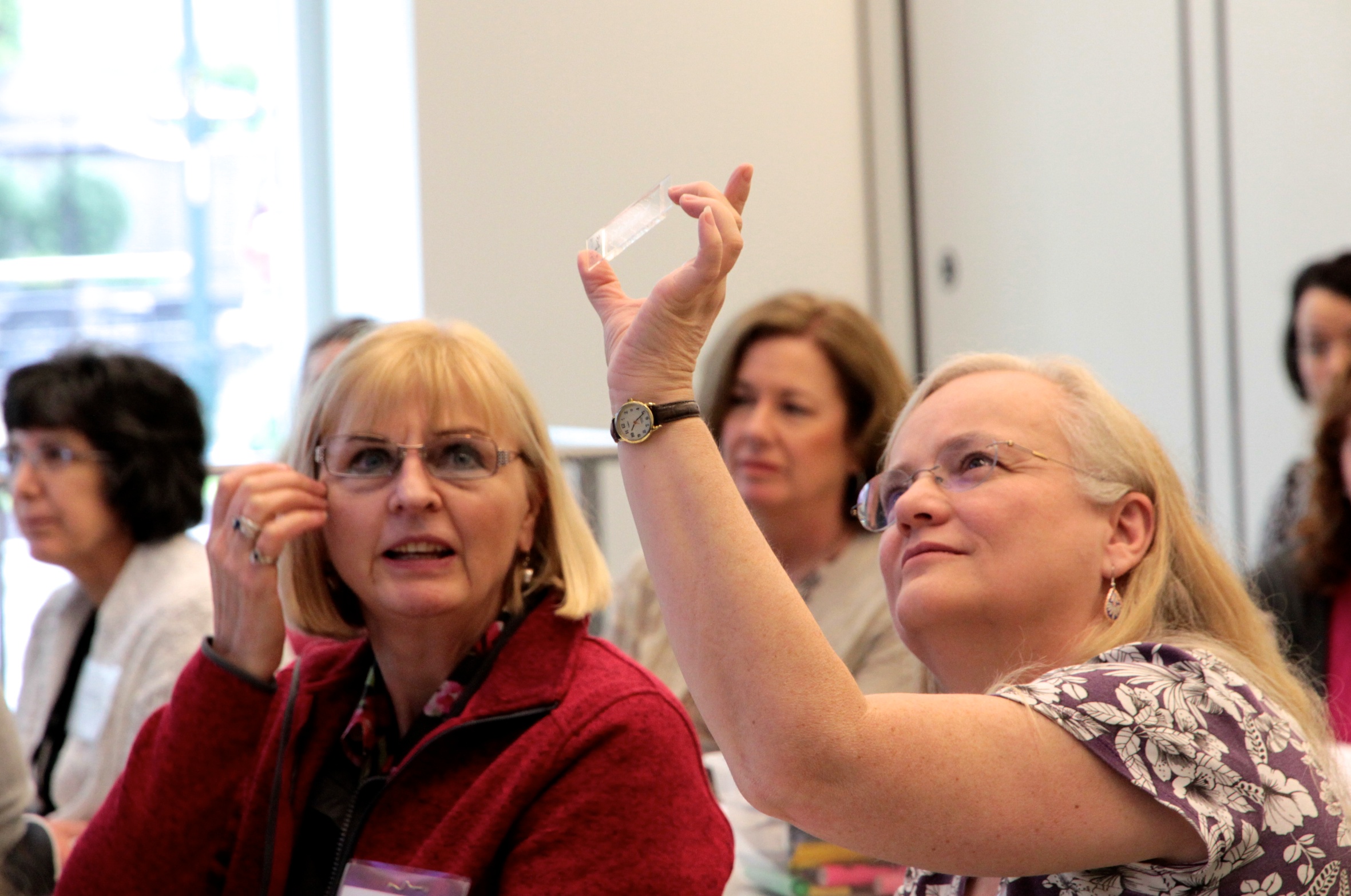K-12 Education: Next Generation Science Standards
 isbscience.org/news/2013/04/11/k-12-edu-next-generation-science-standards/
isbscience.org/news/2013/04/11/k-12-edu-next-generation-science-standards/

Educators from Northshore School District study microfluidics devices during a workshop with ISB’s education team to discuss implementing Next Generation Science Standards.
By Dana Riley Black, ISB Director for Center for Inquiry Science
April 11, 2013 — Earlier this week the new national Next Generation Science Standards were released. (Here’s a New York Times report regarding the release.)
While states are not required to adopt these new standards, 26 states, including Washington State, are seriously considering adoption. Similar to the Common Core State Standards for Mathematics and English Language Arts, the Next Generation Science Standards are purposed with raising teaching and learning expectations with focus on critical thinking and primary investigation.
It was 1996 when the last national science standards were published. Since this time, much has changed in science, and much has changed in science education. Unique to the new standards is the inclusion not only of science content, but also science and engineering “practices” – that is, the way in which scientists and engineers engage STEM.
Today, ISB hosted a group of educators from the Northshore School District. ISB’s K-12 education team is guiding Northshore in its development of a new science strategic plan for elementary schools – a strategic plan that aligns to the Next Generation Science Standards. To learn more about science and engineering practices, the educators had opportunity to talk with ISB scientists and engineers about real world or authentic science and engineering practices. For example, Cora Chadick, core facility coordinator, introduced the educators to microfluidics technologies and how such devices are advancing ISB research. And Chris Lausted, senior research engineer, shared how he worked with scientists to devise a specialized day/night simulation lid for a cell growth chamber.
ISB not only does cutting-edge science, but leads the way in advocating cutting-edge K-12 science education methods. Learn more about ISB’s education work.

Chris Lausted, ISB senior research engineer, explains how he invented a specialized day/night simulation lid for a cell growth chamber.






